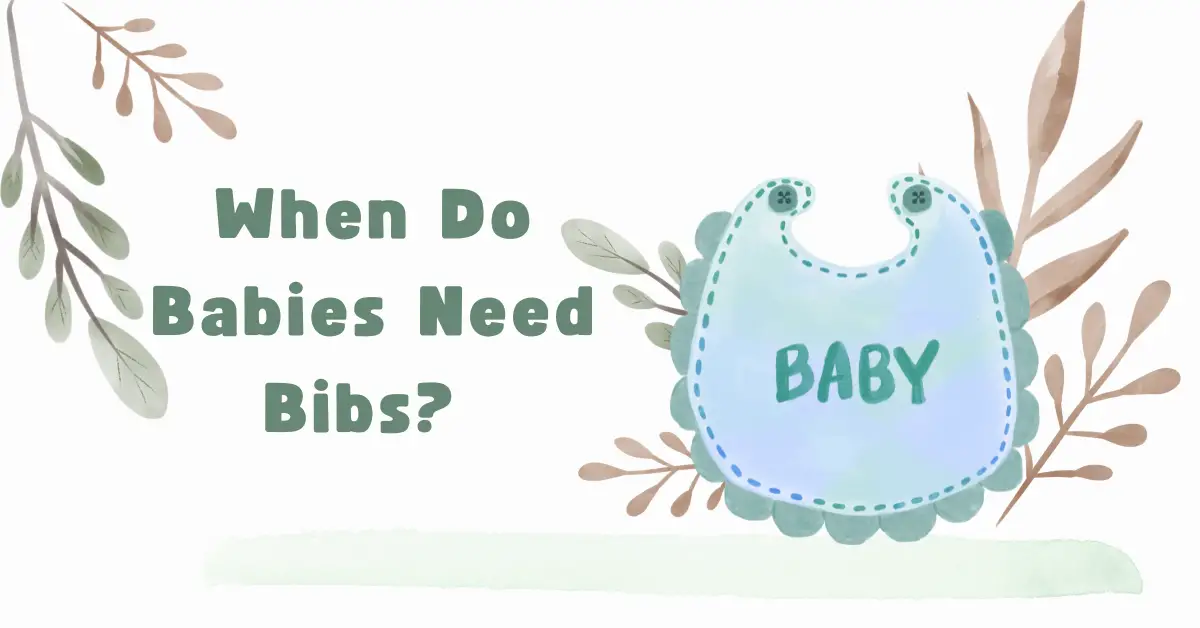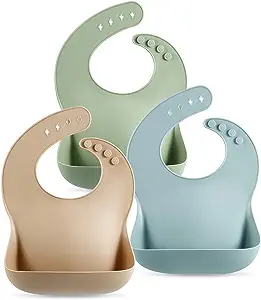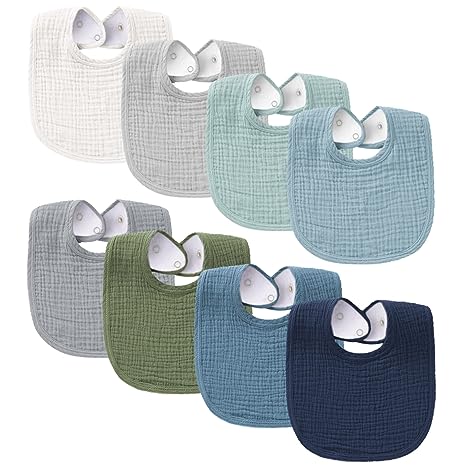First of all, a big, warm welcome to the beautiful journey of parenthood! Every new parent, just like you, embarks on this adventure filled with countless questions, from the most significant challenges to the little details. Among those questions is the curious world of baby bibs. When do you need bibs? How many bibs should you have on hand? Fear not, this guide aims to answer those questions and make parenting your baby just a bit smoother.
When should a baby start wearing a bib?
Babies, as adorable as they are, can get a bit messy! Whether it’s milk dribbles, drool, or that exciting (and sometimes colourful) introduction to solids, a bib can be a real day-saver for those cute little outfits.
- Teething time: As early as 2-3 months, your baby might start teething, and with teething comes drool—a lot of it! A bib can help keep your baby dry and comfortable. It also means less frequent outfit changes, which we’re pretty sure you’ll appreciate!
- Feeding adventures: Once you begin introducing solid foods, typically around 6 months, a bib becomes a shield against those inevitable food spills. It’s both amusing and slightly messy to watch your little one explore the tastes and textures of new foods.
Tip: It’s not about a specific age but more about the signs your baby shows. If you find you’re often cleaning drool from their chin or changing outfits after feeds, it might be a good time to introduce a bib. And remember, every baby is unique, so follow your little one’s cues.
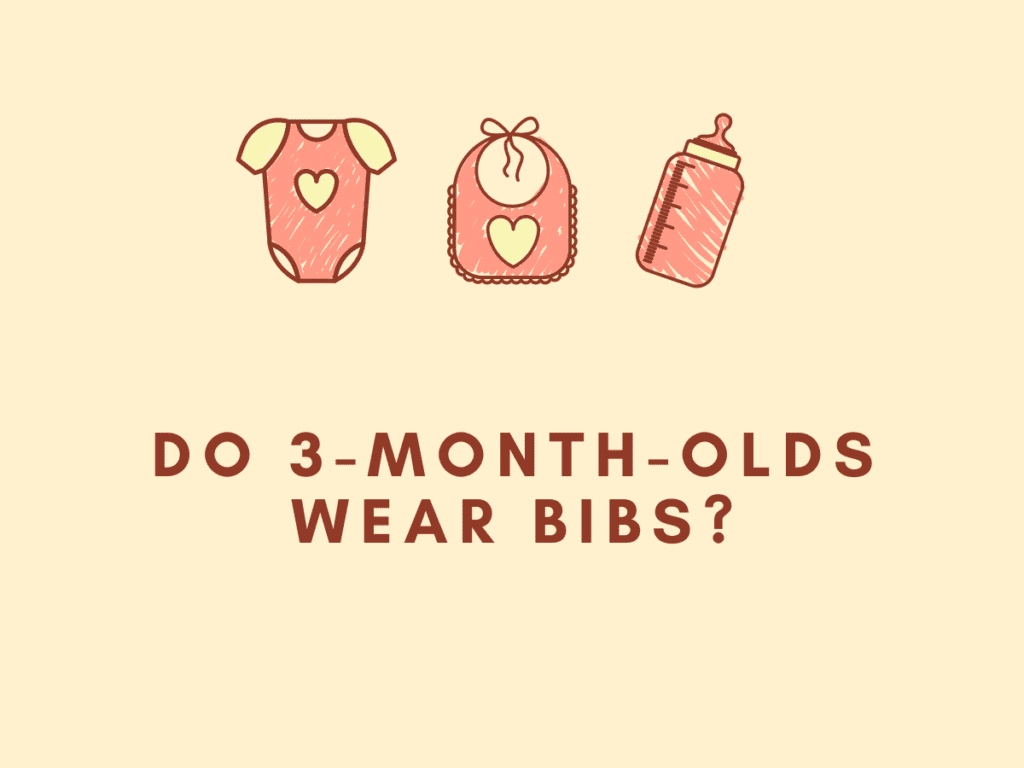
Do 3-month-olds wear bibs?
Ah, the 3-month mark! This stage is a blend of sleepy snuggles, the beginnings of baby giggles, and yes, sometimes a bit more mess. So, do 3-month-olds need bibs? Let’s explore:
- Drooling Days: Around this age, many babies begin to drool more. This could be due to their developing salivary glands or the early stages of teething. A soft, absorbent bib can prevent that drool from soaking their clothes and might help in reducing rashes caused by prolonged dampness on their sensitive skin.
- Feeding Fumbles: Even if you’re just bottle-feeding or breastfeeding, little mishaps happen. Babies can sometimes dribble milk, and a bib can save you from having to change their outfit multiple times a day.
Tip: At 3 months, you’ll want to ensure that any bib you use is ultra-soft and free from hard edges or parts that could scratch your baby’s delicate skin. Velcro can sometimes be scratchy, so bibs with snaps or soft ties might be a gentler choice. And always, always supervise your baby when they’re wearing a bib, ensuring they’re safe and comfy.
Remember, there’s no hard and fast rule to this. If you feel a bib would make your life a bit simpler and your baby more comfortable, go for it. Otherwise, it’s perfectly okay to wait a bit longer. Your baby, your rules!
Can a 2-month-old wear a bib?
You might be wondering if 2-month-olds are in the bib club too. While every baby’s journey is unique, there are some considerations for this tender age:
- Gentle Beginnings: At 2 months, babies are still quite delicate. If you’re noticing some milk dribbles during or after feeds, a bib might be of help. However, the emphasis should be on the word ‘gentle’. Opt for soft, lightweight bibs that don’t overwhelm their tiny necks.
- Skin Sensitivity: A younger baby’s skin is even more susceptible to irritations. If wetness from drool or milk is left unchecked, it can lead to mild rashes. A bib can act as a barrier, keeping moisture away.
Tip: Always ensure a snug but not tight fit. It’s essential to ensure your baby can breathe comfortably and there’s no risk of the bib becoming a hazard. At this age, always keep an eye on them while they’re wearing a bib, and remove it during nap or sleep times.
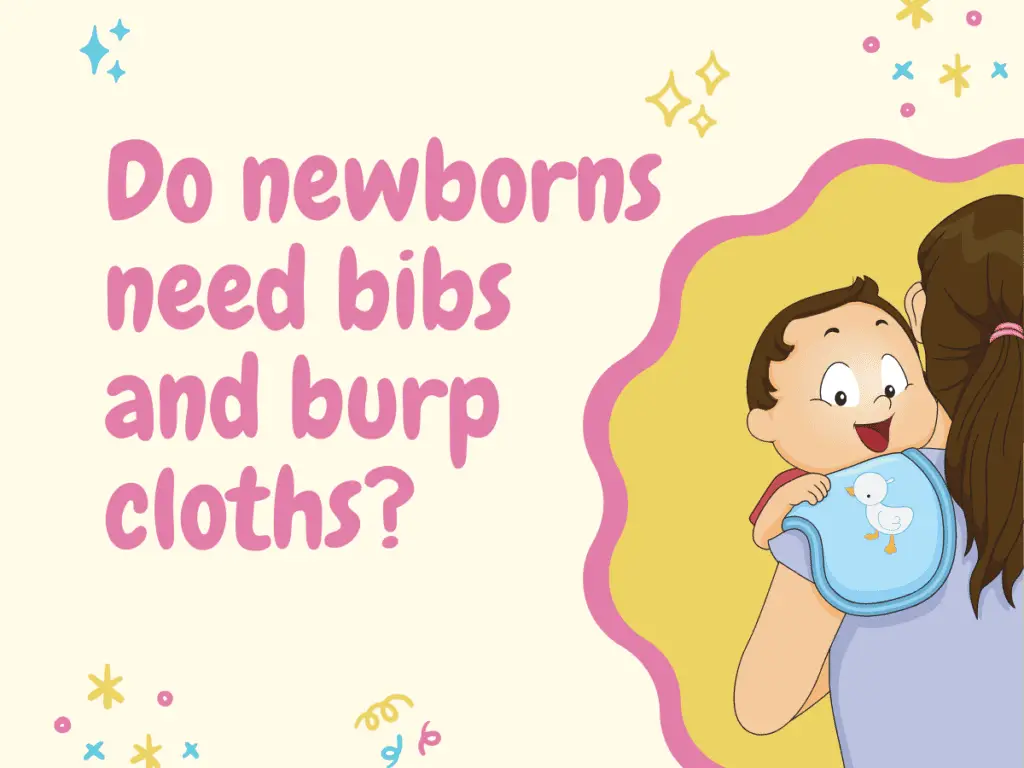
Do newborns need bibs and burp cloths?
Newborns are a bundle of joy and, yes, a tiny bundle of spills and spit-ups too! Let’s navigate the world of newborns, bibs, and burp cloths:
- Newborn Necessities: In the very early days, your focus will likely be on feeding and ensuring your baby is comfortable. While bibs can be helpful for some newborns, especially those prone to frequent spit-ups, they aren’t a necessity for all.
- The Role of Burp Cloths: These are a lifesaver! After feeding, babies often need a little pat on the back to help them burp. A burp cloth is your shield against any unexpected spit-up that comes with that burp. It’s broader and more absorbent than a regular bib, making it ideal for draping over your shoulder.
Tip: Keep a burp cloth handy during and after each feeding session. They’re great for cleaning up little messes and for keeping both you and your baby dry. As for bibs, trust your instincts. If you feel your newborn could benefit from wearing one, choose the softest, most lightweight option available.
This stage is all about learning and adapting. Every day is a new chapter in understanding your baby’s needs. Whatever choices you make, they’re the right ones for your unique journey.
The difference between a burp cloth and a bib
Navigating the aisles of baby stores, you’re bound to come across both bibs and burp cloths. While they might seem somewhat similar, they serve distinct purposes. Let’s break down the differences:
- Design and Shape: Bibs are designed to fit snugly around a baby’s neck, catching dribbles, drool, and food spills. They usually come in a semi-circular or triangular shape. On the other hand, burp cloths are broader, more rectangular, and designed to be draped over your shoulder or laid on your lap.
- Functionality: Bibs are primarily to keep your baby clean, especially during feeding or teething periods. Burp cloths, meanwhile, are for parents to use post-feeding to catch any spit-up when burping the baby.
- Material Matters: Both items prioritize absorbency, but burp cloths are often thicker and can handle more significant amounts of liquid, given the nature of their use. Bibs, while absorbent, prioritize comfort around the baby’s neck.
Tip: It’s a good idea to have both in your baby toolkit. While they serve different purposes, both are aimed at making the feeding process cleaner and more comfortable for everyone involved.
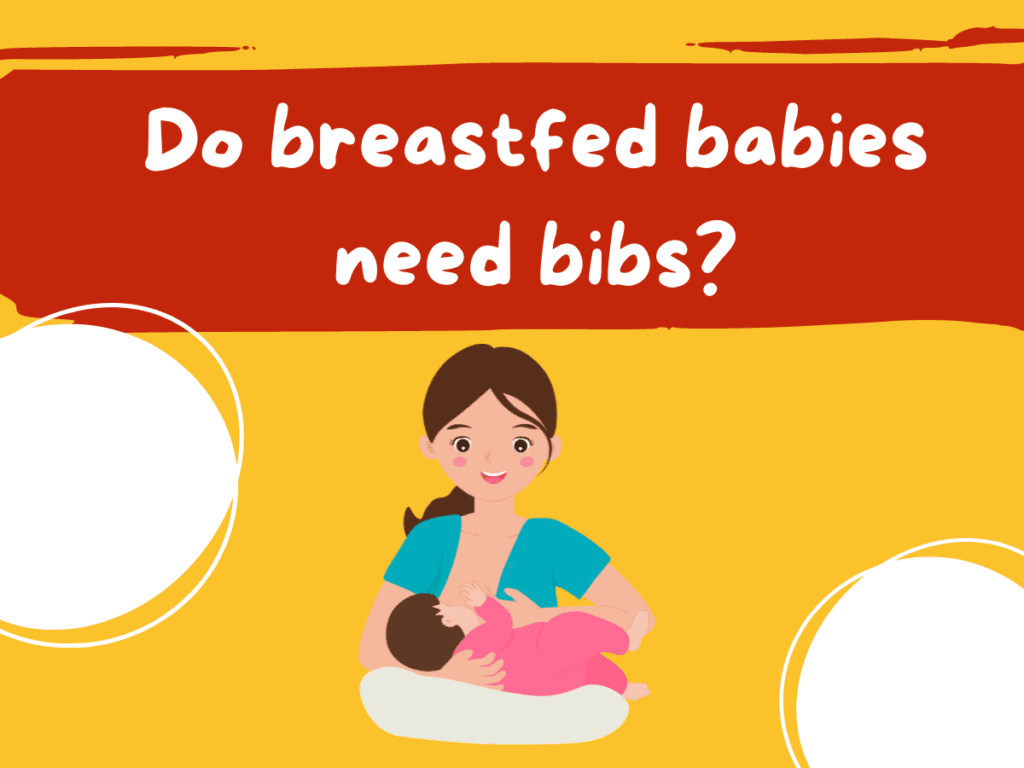
Do breastfed babies need bibs?
Breastfeeding is a beautiful bonding experience, but it can come with its set of dribbles and drops! Let’s address the bib question for breastfed babies:
- Feeding Flow: Sometimes, the flow of milk might be faster than your baby can swallow, leading to dribbles. A bib can catch these, ensuring your baby remains dry and comfortable.
- Latch and Learning: As both mom and baby are getting the hang of latching and feeding positions, there might be moments of milk leakage. A bib can be handy during these learning phases.
- Post-Feed Spit-Ups: Some breastfed babies might spit up after their feed. While a burp cloth is essential for this, having a bib on during feeding can preemptively catch any minor spit-ups.
Tip: Whether you’re breastfeeding or bottle-feeding, the goal is to ensure your baby is comfortable and the feeding process is as smooth as possible. If you find that a bib helps in achieving this, it’s a worthwhile addition to your routine. However, always remember that each baby is different. Some might benefit from a bib during breastfeeding, while others may not need one.
In the world of parenting, you’re the expert on your baby. Trust your instincts and observe your little one’s cues. They’ll often show you exactly what they need.
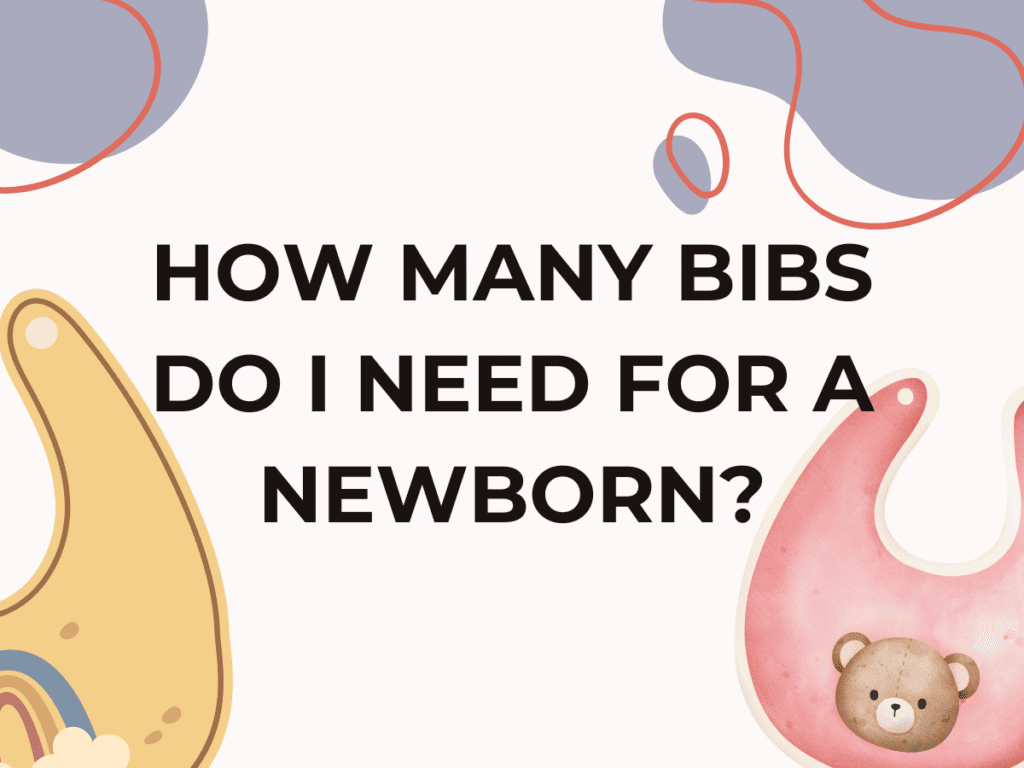
How many bibs do I need for a newborn?
Having about 10-12 bibs can be a good starting point for a newborn. This allows for a couple of changes a day and some buffer for those particularly messy days.
- Frequency of Feeds: Newborns eat frequently, whether it’s breastfeeding or bottle-feeding. If your little one tends to dribble milk during feeds, you might find yourself reaching for a bib quite often.
- Laundry Considerations: How often do you plan to do the laundry? If you’re leaning towards washing baby items daily, a smaller stash of bibs might suffice. However, if laundry days are less frequent, having a few extra on hand can be beneficial.
Tip: Start with a basic set and see how often you use them. You can always buy more as you get to know your baby’s habits. It’s also a good idea to have a mix of lightweight bibs for milk feeds and thicker ones if your baby is prone to larger spit-ups.
Can newborns wear bibs to sleep?
When it comes to bedtime, comfort and safety are paramount. Let’s address the question of bibs during sleep:
- Safety First: It’s generally not recommended for newborns or infants to wear bibs while sleeping. The bib can become a potential hazard, posing risks like choking or strangulation.
- Comfort Concerns: Apart from safety, think of comfort. A bib might bunch up, become wet, or simply be an unnecessary addition that could disturb your baby’s sleep.
- Night Feeds: If you’re thinking of bibs because of night feeds, consider this approach: use the bib during the feeding and remove it once your little one drifts back to sleep.
Tip: Prioritize a safe sleeping environment. This means a firm mattress, a tight-fitting sheet, and no loose items in the crib, including bibs. If you’re concerned about dribbles or spit-ups during sleep, choose absorbent bedding and consider layering sheets for easy nighttime clean-ups.
Parenting is all about learning and adapting. As you journey through these early stages, always prioritize your baby’s safety and comfort, and know you’re doing an incredible job!
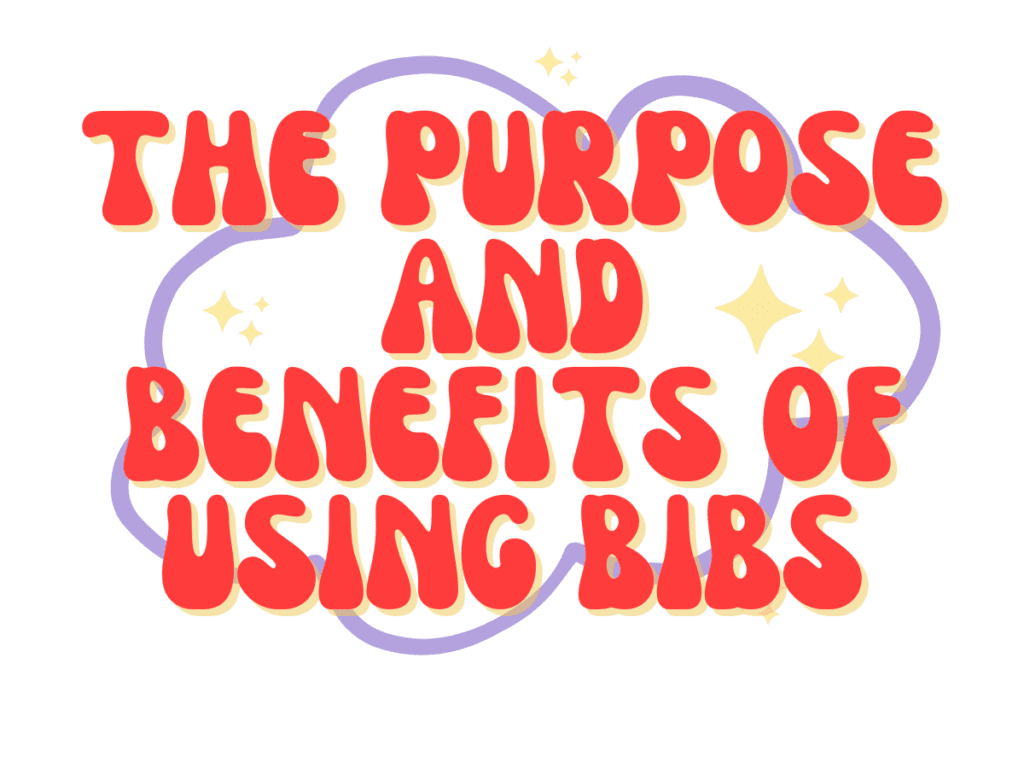
The Purpose and Benefits of Using Bibs
You may wonder why bibs hold such significance in the baby world. Let’s shed light on the main purposes and benefits of using bibs:
- Mess Minimizer: Babies are naturally a bit messy when it comes to feeding or drooling during teething. Bibs catch those dribbles, spills, and little messes, ensuring fewer outfit changes and less laundry.
- Skin Protection: Prolonged dampness from milk or drool can irritate a baby’s delicate skin, potentially leading to rashes. Bibs act as a barrier, absorbing moisture and keeping your baby’s skin dry.
- Cost Saving: Those cute little baby outfits can get stained easily. Using a bib can protect them from potential staining, ensuring they last longer and look fresh.
- Convenience: When you’re out and about, swapping a bib is much simpler than changing an entire outfit. It’s a quick fix to keep your baby comfortable and presentable.
Tip: While bibs offer numerous benefits, it’s essential to find a balance. Giving your baby’s skin some bib-free time can also be refreshing, ensuring they don’t feel too restricted.
Picking the Right Bib: Materials and Styles
Choosing the right bib can be a tad overwhelming. Here’s a guide to materials and styles to consider:
- Materials:
- Cotton: Soft, breathable, and highly absorbent, cotton bibs are great for everyday use, especially for younger babies.
- Terry Cloth: This is super absorbent and ideal for those heavy drooling days or during teething.
- Silicone: Perfect for the introduction of solids, silicone bibs are easy to clean and often come with a catchment pocket at the bottom.
- Waterproof Backing: These bibs prevent liquids from soaking through, making them excellent for messy feedings.
- Styles:
- Bandana Bibs: These are trendy, triangular in shape, and perfect for teething babies. They’re stylish yet functional.
- Feeder Bibs: Larger in size and often equipped with a pocket at the bottom, they’re designed for meal times.
- Smock or Long-Sleeved Bibs: Ideal for those adventurous self-feeding sessions, they offer full coverage to protect your baby’s clothing.
Recommendation
Silicone bibs are great for feeding when you start with solid foods. They are easy to rinse and clean in the sink which prevents adding to the never-ending pile of laundry.
For teething drool use, however, cloth bibs are far better. The silicone bibs are fairly rigid and so they don’t move as easily with your baby while they are moving around or playing.
Tip: It’s a good idea to have a mix of different bibs to cater to various needs. Start with basic ones and expand your collection as you discover your baby’s preferences and needs. Remember, comfort and safety first; choose bibs with soft edges, and avoid those with small parts that could pose a choking hazard.
Wrapping Up When Do Babies Need Bibs
You’ll find that even small items like bibs can spark numerous questions. And that’s perfectly okay! It’s all a part of understanding the best ways to care for and comfort your little one. From drooling days to first foods, bibs play a supportive role in ensuring your baby stays dry, comfy, and happy.
However, the golden rule remains: there’s no one-size-fits-all answer. What works wonders for one baby might be different for another. Your intuition, combined with observing your baby’s cues, will be your best guide. Whether you choose to use bibs frequently or sparingly, always prioritize your baby’s safety and comfort.
Lastly, amid the hustle and bustle of baby care, take moments to cherish the simple joys. The giggles during feeding, the wide-eyed wonder as they explore the world, and yes, even the little messes they create. After all, they grow up so fast, and these are the memories that will warm your heart for years to come.
Wishing you and your little one countless happy, bib-filled (or bib-free!) moments ahead!

